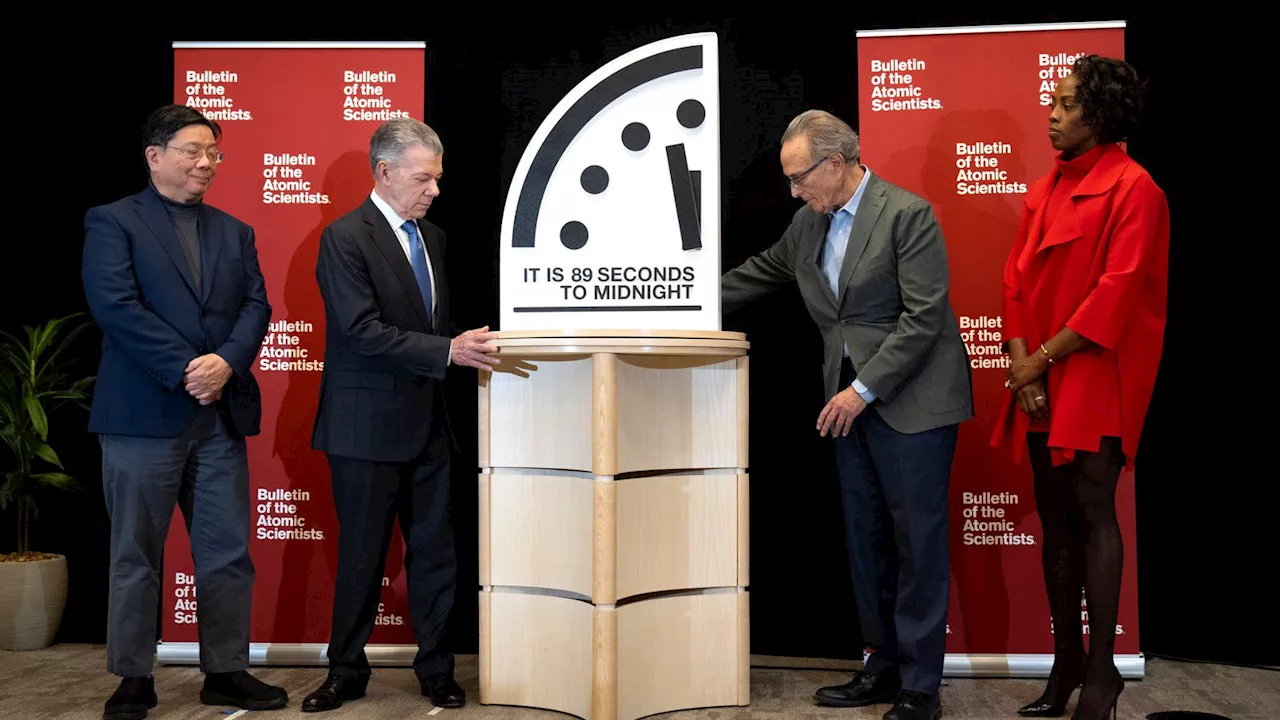The Doomsday Clock, a symbolic representation of humanity's proximity to global catastrophe, has been moved closer to midnight than ever before, now standing at 89 seconds to midnight.
The Doomsday Clock , a symbolic representation of humanity's proximity to global catastrophe, has been moved closer to midnight than ever before, now standing at 89 seconds to midnight. This alarming shift, announced on January 28, 2024, signifies an increased perception of global threats, marking a one-second closer move from where it resided for the past two years.
The Bulletin of the Atomic Scientists, a group of scientists and security experts, is responsible for setting the clock's time based on their assessment of global risks.The Doomsday Clock's origins trace back to the 1940s, born out of the chilling reality of nuclear war. Following the United States' atomic bombings of Hiroshima and Nagasaki at the conclusion of World War II, the Bulletin's founders sought to illuminate the immensity of the nuclear threat to human existence. The Bulletin's Science and Security Board, comprised of nuclear and climate experts, has overseen the clock's time since 1973, inheriting the responsibility from Eugene Rabinowitch, a prominent Bulletin editor and disarmament advocate. The clock's proximity to midnight is determined by the collective evaluation of the board's experts, alongside academic colleagues and the Bulletin's sponsors, which include an array of Nobel laureates. In 2023, the clock advanced to 90 seconds to midnight due to the escalating dangers posed by the war in Ukraine. This marked the first change since 2020, when it stood at 100 seconds. Experts characterized 2023 as a period of unprecedented peril, citing the heightened nuclear threat, political tensions, climate change, and the emergence of novel diseases. The following year, the clock remained steady at 90 seconds, as scientists underscored the continued, unprecedented level of risk emanating from threats including war, the climate crisis, and the rapid advancement of artificial intelligence. The latest adjustment to 89 seconds to midnight serves as a stark warning to global leaders. Daniel Holz, chair of the Bulletin's Science and Security Board, emphasized that the factors driving this decision – nuclear risk, climate change, the potential misuse of advancements in biological science, and the proliferation of emerging technologies such as artificial intelligence – are not novel phenomena in 2024. However, he stressed the insufficiency of progress in addressing these critical challenges, leading to increasingly detrimental and worrisome consequences.Holz highlighted the ongoing war in Ukraine as a major source of nuclear risk, warning that the conflict could escalate to involve nuclear weapons at any moment due to rash decisions, accidents, or miscalculations. He expressed alarm over Russia's repeated use of nuclear threats since the war began and its recent withdrawal from crucial arms control treaties, signaling a concerning increase in nuclear risk. While a ceasefire currently prevails between Israel and Hamas in Gaza, Holz cautioned that tensions in the Middle East, particularly involving Iran, remain dangerously unstable. He pointed to other potential flashpoints like Taiwan and North Korea, which could trigger unpredictable and potentially catastrophic outcomes through nuclear attacks.Holz identified two primary threats posed by artificial intelligence. The first concerns its battlefield application, currently in its nascent stages but raising serious concerns about its potential integration with nuclear weapons. The second threat lies in AI's impact on global security. He stated that AI is increasingly disrupting the world's information ecosystem, fueling the spread of disinformation and misinformation, further exacerbating existing dysfunction.Finally, the scientists underscored the urgency of addressing climate change, citing last year as the hottest on record and the last decade as the hottest on record, according to the UN World Meteorological Organization. While acknowledging the impressive growth in wind and solar energy, Holz emphasized that the world is still falling short of what is necessary to avert the worst consequences of climate change
Doomsday Clock Nuclear Threats Climate Change Artificial Intelligence Global Risks War In Ukraine
United Kingdom Latest News, United Kingdom Headlines
Similar News:You can also read news stories similar to this one that we have collected from other news sources.
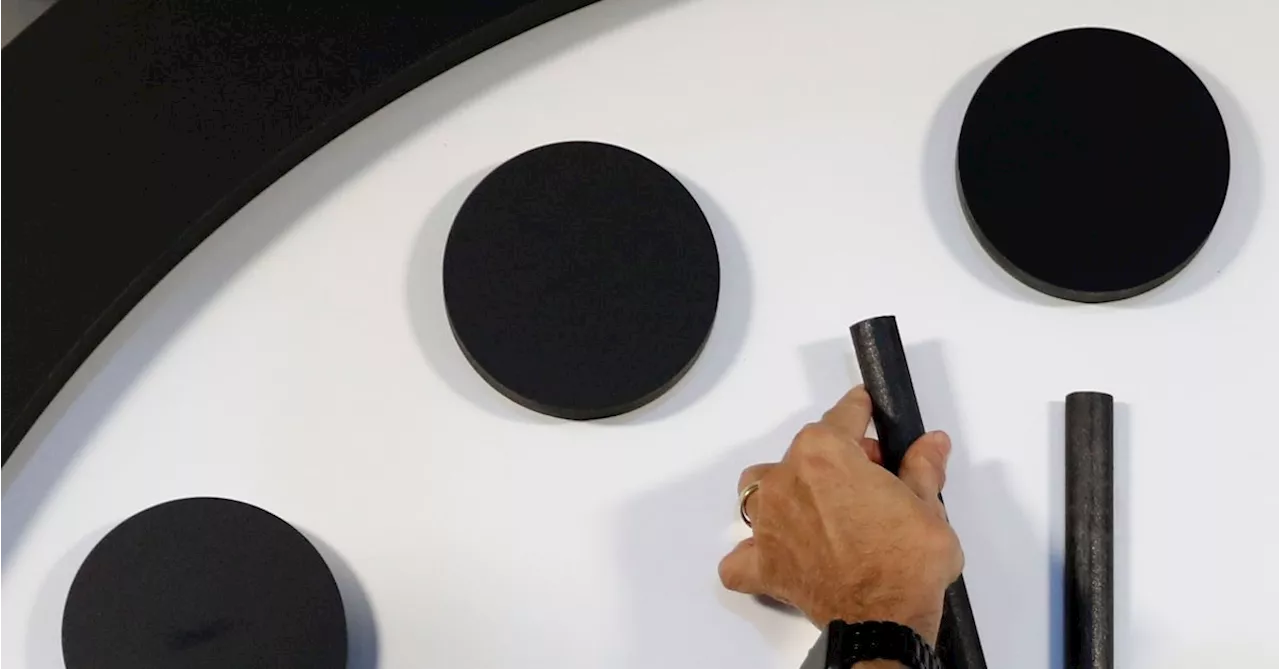 The Doomsday Clock Just Moved Closer to MidnightToday, the Doomsday Clock was set to 89 seconds to midnight, signaling that experts fear we are dangerously close to a global catastrophe.
The Doomsday Clock Just Moved Closer to MidnightToday, the Doomsday Clock was set to 89 seconds to midnight, signaling that experts fear we are dangerously close to a global catastrophe.
Read more »
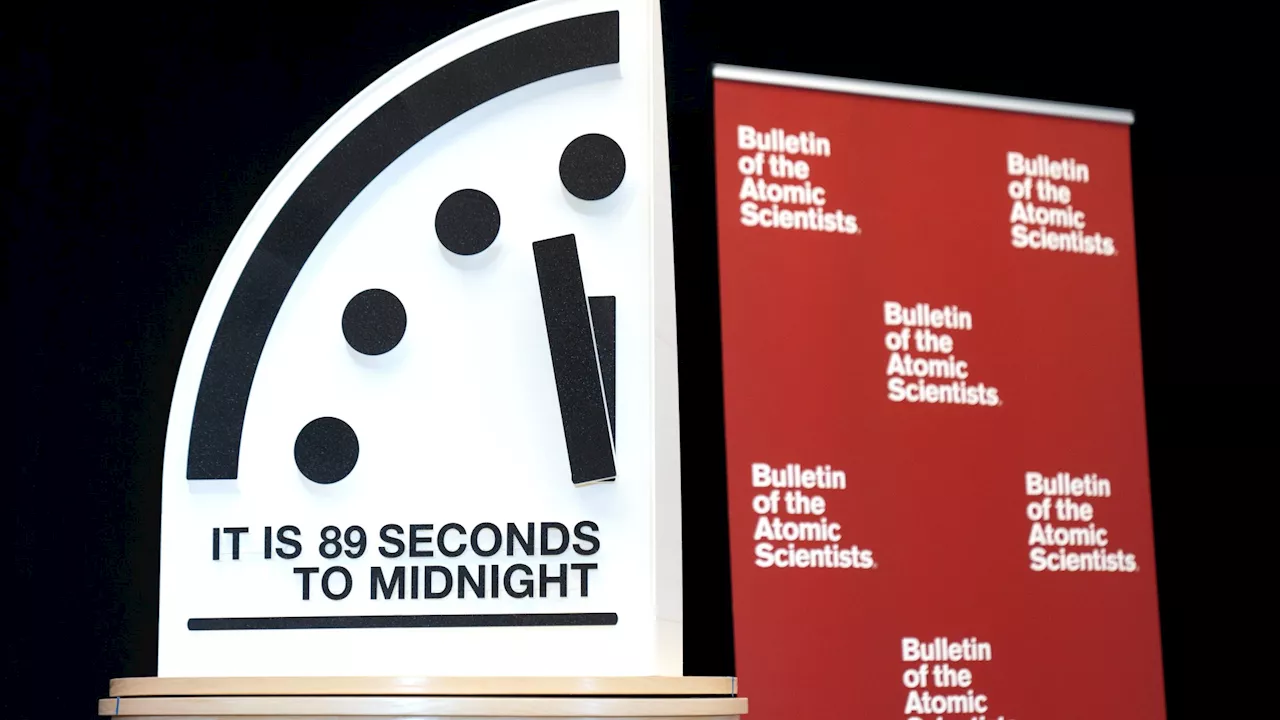 Doomsday Clock Moved to 89 Seconds to Midnight Over Fears of Global ApocalypseThe Doomsday Clock has been moved to its closest point ever to midnight, just 89 seconds away, reflecting growing global threats such as nuclear war, AI dangers, and the emergence of new diseases. Scientists warn that insufficient progress is being made to address these challenges, highlighting the urgency of the situation.
Doomsday Clock Moved to 89 Seconds to Midnight Over Fears of Global ApocalypseThe Doomsday Clock has been moved to its closest point ever to midnight, just 89 seconds away, reflecting growing global threats such as nuclear war, AI dangers, and the emergence of new diseases. Scientists warn that insufficient progress is being made to address these challenges, highlighting the urgency of the situation.
Read more »
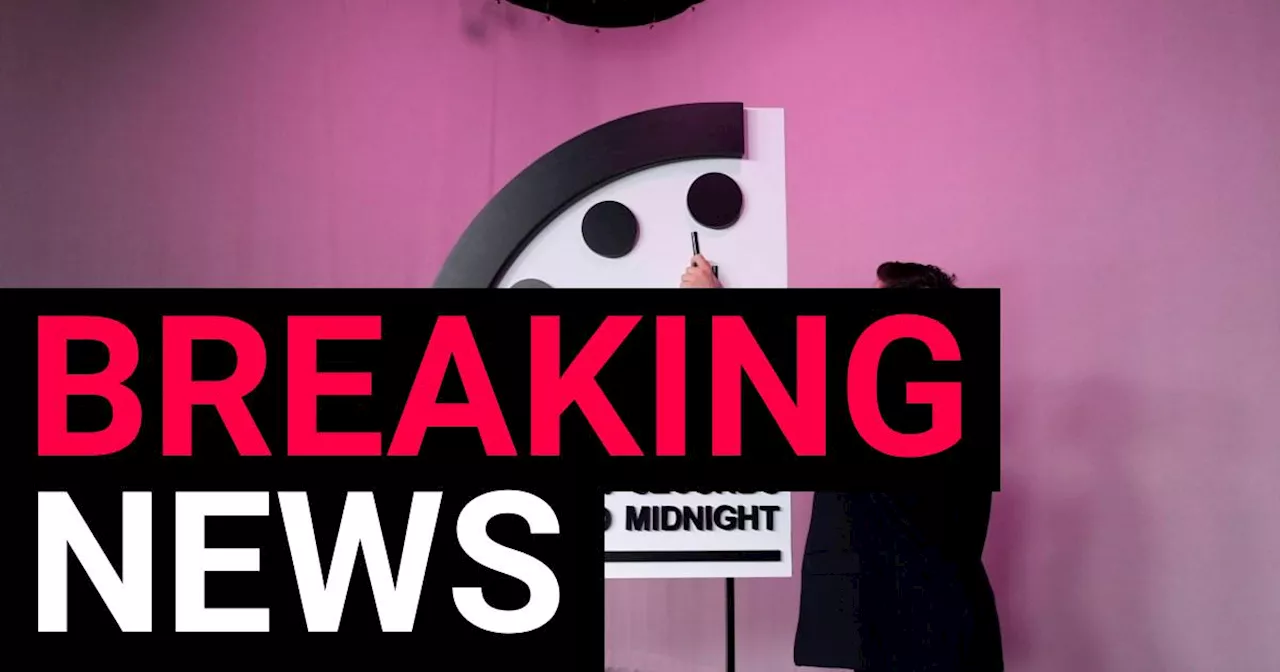 Doomsday Clock Moved to 89 Seconds to Midnight: Humanity on Brink of CatastropheThe Doomsday Clock, a symbolic representation of humanity's proximity to global catastrophe, has been moved forward to 89 seconds to midnight, signaling an alarming increase in global threats.
Doomsday Clock Moved to 89 Seconds to Midnight: Humanity on Brink of CatastropheThe Doomsday Clock, a symbolic representation of humanity's proximity to global catastrophe, has been moved forward to 89 seconds to midnight, signaling an alarming increase in global threats.
Read more »
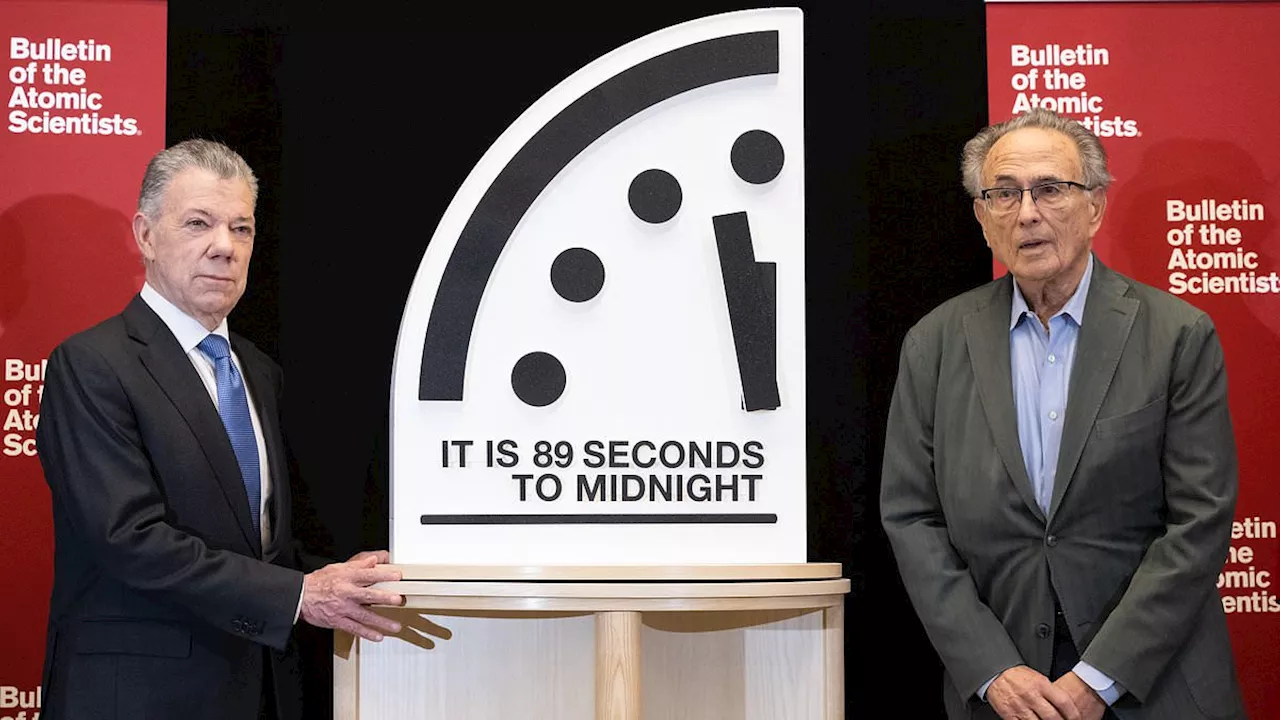 Doomsday Clock Moved to 89 Seconds to Midnight, Closest Ever to Global CatastropheThe Doomsday Clock, a symbolic representation of humanity's proximity to global catastrophe, has been moved to 89 seconds to midnight, the closest it has ever been in its 78-year history. The Bulletin of Atomic Scientists cited a confluence of escalating global threats for this alarming move, including the war in Ukraine, persistent conflicts in the Middle East, the ever-present danger of nuclear war, climate change, a looming bird flu pandemic, and the rapid development of AI weaponry.
Doomsday Clock Moved to 89 Seconds to Midnight, Closest Ever to Global CatastropheThe Doomsday Clock, a symbolic representation of humanity's proximity to global catastrophe, has been moved to 89 seconds to midnight, the closest it has ever been in its 78-year history. The Bulletin of Atomic Scientists cited a confluence of escalating global threats for this alarming move, including the war in Ukraine, persistent conflicts in the Middle East, the ever-present danger of nuclear war, climate change, a looming bird flu pandemic, and the rapid development of AI weaponry.
Read more »
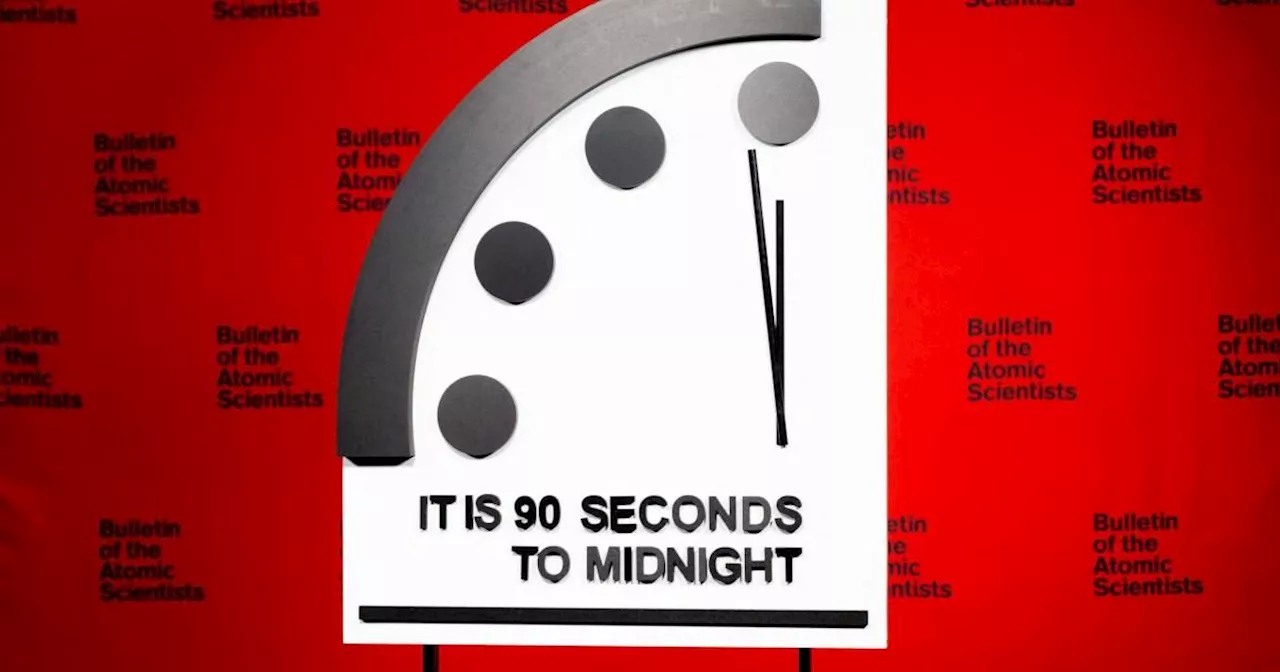 Will Doomsday Clock Tick Closer to Midnight?The Bulletin of the Atomic Scientists will announce if the symbolic Doomsday Clock will move closer to midnight, reflecting the global threats to humanity. The clock, set at 90 seconds to midnight, considers factors like conflict, climate change, and nuclear proliferation in its decision.
Will Doomsday Clock Tick Closer to Midnight?The Bulletin of the Atomic Scientists will announce if the symbolic Doomsday Clock will move closer to midnight, reflecting the global threats to humanity. The clock, set at 90 seconds to midnight, considers factors like conflict, climate change, and nuclear proliferation in its decision.
Read more »
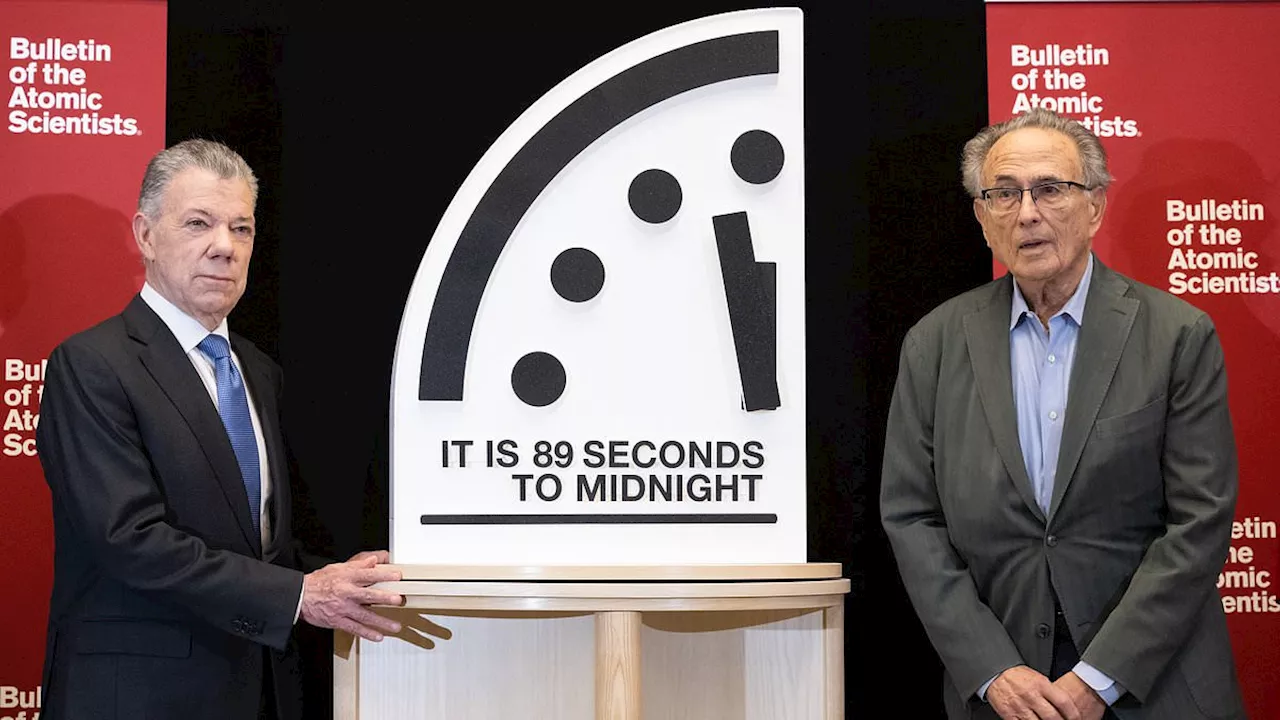 Doomsday Clock ticks forwards to 89 seconds to midnight - the closest humans have ever been to...Scientists unveiled the 2025 update for the 'Doomsday Clock' today, revealing that the clock moved one second closer to midnight in 2024, a sign that humanity is close to a catastrophic end.
Doomsday Clock ticks forwards to 89 seconds to midnight - the closest humans have ever been to...Scientists unveiled the 2025 update for the 'Doomsday Clock' today, revealing that the clock moved one second closer to midnight in 2024, a sign that humanity is close to a catastrophic end.
Read more »
